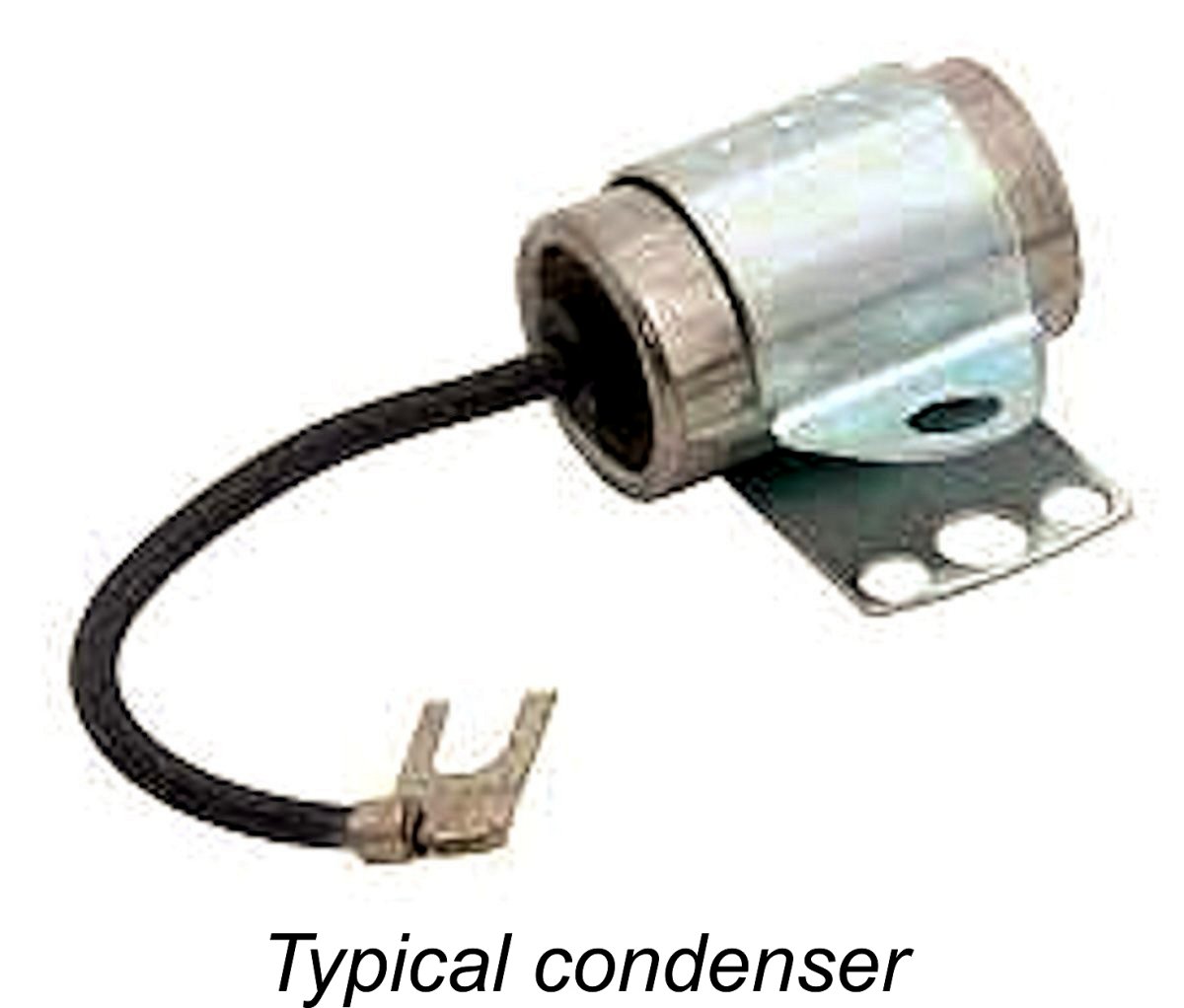Alleen de waarde van de condensator is mij niet duidelijk
Volgens AdriansModelAeroEngines ,
https://www.adriansmodelaeroengines.com/catalog/main.php?cat_id=182
This component of the classic system is also widely referred to as a condenser. The terms capacitor and condenser are in fact synonymous – use whichever you like, and let’s not waste time debating the issue! By either name, this is in effect an electrical energy-storage component which works on the principle that when two electrically conductive surfaces in close proximity are separated by an insulating medium (called a "dielectric"), they exhibit an electrical energy-storing property called “capacitance”, which we can measure. An important point to remember is that current cannot pass
through a capacitor – if it does so, the capacitor has broken down and has become a conductor. All that the capacitor can do is
store and later release electrical energy – it can’t
pass it.
The property in question is measured in Farads (named after the noted British electrical pioneer
Sir Michael Faraday). However, a whole Farad is a very large and potentially dangerous quantity of stored electrical energy not often encountered. Accordingly, for the relatively small energy storage requirements of our systems, we use a component having a far lower capacitance which is only a very small fraction of a Farad. For convenience of reference, we prefix the capacitance figure with "micro" (meaning one millionth), as it's much easier to ask for a 0.2 micro-Farad capacitor than a 0.0000002 Farad condenser, which is typically what you'll be looking for.
The normal abbreviations for a micro-Farad are "μF", "uF", or "mF". The F is always a capital letter because once again it represents a person's name. The lower case "m" is an abbreviation for "micro", which may be represented using the Greek letter "
mu" (μ). The use of the lower case "u" is strictly a convenience for representing μ using typography that lacks Greek letters.
Groeten Jef





